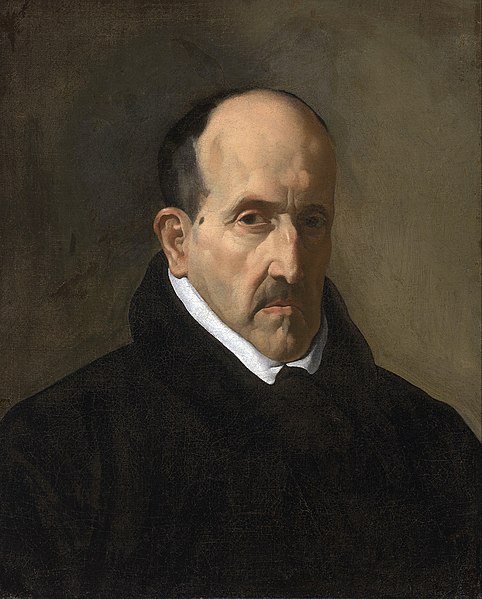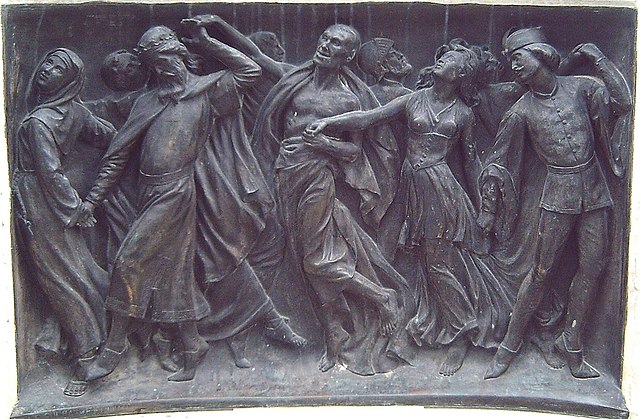Luis de Góngora y Argote was a Spanish Baroque lyric poet and a Catholic prebendary for the Church of Córdoba. Góngora and his lifelong rival, Francisco de Quevedo, are widely considered the most prominent Spanish poets of all time. His style is characterized by what was called culteranismo, also known as Gongorismo. This style apparently existed in stark contrast to Quevedo's conceptismo, though Quevedo was highly influenced by his older rival from whom he may have isolated "conceptismo" elements.
Luis de Góngora (1622), in a portrait by Diego Velázquez.
Title page of the Chacon Manuscript.
Spanish Baroque literature
Spanish Baroque literature is the literature written in Spain during the Baroque, which occurred during the 17th century in which prose writers such as Baltasar Gracián and Francisco de Quevedo, playwrights such as Lope de Vega, Tirso de Molina, Calderón de la Barca and Juan Ruiz de Alarcón, or the poetic production of the aforementioned Francisco de Quevedo, Lope de Vega and Luis de Góngora reached their zenith. Spanish Baroque literature is a period of writing which begins approximately with the first works of Luis de Góngora and Lope de Vega, in the 1580s, and continues into the late 17th century.
Works from don Francisco de Quevedo Villegas, 1699
The Dance of Death. Monument to Calderón, Madrid.
Miguel de Cervantes
Francisco de Quevedo y Villegas






